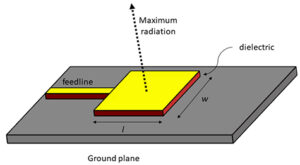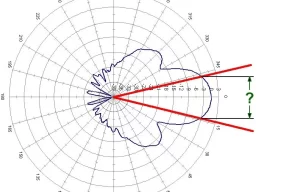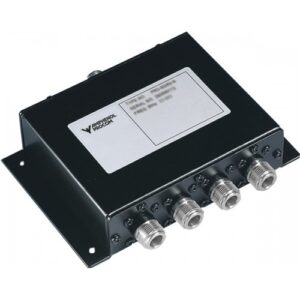Table of Contents
Adjust Satellite Dish Alignment
Aligning your satellite dish correctly is one of the cheapest and most effective methods of satellite internet signal boosting. Correct alignment directs your dish to receive its best signal from the communication satellite. Indeed, when the dish is not aligned well, you get even diminishing returns as regards your satellite signal quality and thus, its internet service provision.
To align your dish, start by checking the azimuth, elevation, and skew figures as provided by the manufacturer of the dish. These figures offer specific angles at which to position your dish in relation to the direction from where the satellite signal is coming. With an alignment mis-as minor as 1-3 degrees, your signal is reduced by up to 50% or more. After these, ensure to adjust your dish correctly; you can manage to get an azimuth using a smartphone compass application.
Then, you follow up by adjusting the elevation of your dish, that is the angle at which it stays thrown into the air. The proper alignment is, therefore, absolutely necessary between the elevation and the satellite, lest you miss the signals completely. In this process, rental of items such as an inclinometer and protractor can help you attain the accurate elevation.
Moreover, to ease the pinpointing of a satellite and detection of the most qualified signal, invest in a satellite finder tool. Not only is the device friendly to use, but also it aids you in knowing the best possible signal, such that, after locating your satellite, it assists you in making the best alignment too. This is due to its real-time reporting and quality feedback or declination measurement of signal strength. Always keep in mind that whatever adjustments you make, they are in line with ensuring a clear line of sight between your satellite and the satellite.
Any obstacles, however minor, diminish, or scatter the signals. Check on your satellite if your area is one always experiencing high winds or storms. It may dislocate the dish slightly, affecting your signal. If it happens, please ensure you re-align your dish. A professional can also help if you are feeling lost.
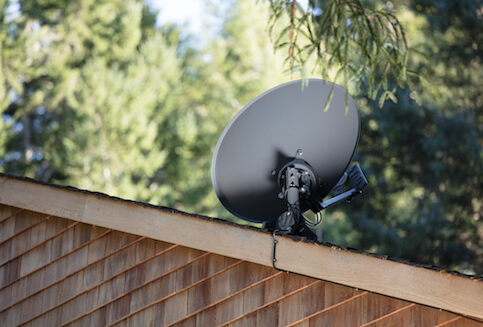
Remove Obstructions
A crucial step toward getting the best signal quality for your satellite internet is removing obstructions. Given that there are no satellites to which the service provides a connection placed lower than a hundred miles above the planet, the only way to get a signal from these devices is a direct line of sight. The following large swathes of the view between the satellite dish and the orbiting object should be kept clear: there should be no trees in the way, no large buildings or large temporary constructions set up within your property. The signal to satellite internet is sensitive, and obstructions in the way can lead to significant drops in signal quality.
Trees are by far the most common type of obstruction – many of them have grown large enough over the years that the branches and foliage obscure the dish’s view of the southern sky, a common requirement for dishes installed in the satellite internet’s target area located on the Northern Hemisphere. As a result, even a small amount of blockage can lead to as much as a 70% reduction in signal quality. However, the calculations can be rough, and any signal reducing obstruction, no matter the type, is worth removing. In the worst-case scenario, the obstruction’s removal would have little effect, while in the best case, you would see great improvements in your internet speed.
Another common situation to consider is the growth of trees or placement of new constructions after the initial installation of the satellite dish. If a dish used in conjunction with a satellite internet connection is obscured by a new construction with no other convenient space to install it in, one has no choice but to remove or trim the obstruction. Shorters trees’ growth rate might mean that they could be taken down and you will never have to worry about it again, while larger transplants and other kind of constructions may need to be moved to ensure that they do not get in the way of the dish placed in another part of your roof.
The latter course of action would likely require purchasing longer satellite dish signal cables if those included in the kit along with the rest of the required equipment are insufficient. Use a compass to determine in which direction the dish should be facing and check for potential obstructions in that direction. Lastly, for those living in areas with significant snowfall, heavy snowfall piled up on top of the dish may lead to a drop in signal quality. To deal with this issue, consider implementing a simple cover over the dish or a low-heat de-icer – it is important that this is the type that will not damage the dish’s sensitive components in performance of the job.
Upgrade Your Equipment
An appropriate way of improving your internet connection is upgrading your satellite internet equipment. In cases in which a user has not changed the satellite dish or modem in years, these tools are likely to benefit their performance by advancement through technology. An upgrade is a process by which a previous generation of a home’s satellite equipment, particularly the satellite dish, or modem, or other associated hardware, is replaced with a newer generation of the same technology.
The modernisation of the relationship to the satellite may increase the speed of the connection or make it more reliable or both. Many Internet service providers, for example, will replace a user’s older satellite dish or other equipment with newer, better ones. It will allow users to make better use of the latest principles in satellite communication. More expensive models of satellite dishes, particularly those introduced in the past decade, can be replaced with more modern options, and there are other solutions.
It is enough for relatively old dishes to have their service restored and the material from which they are made to be replaced with better materials. When the direction is just right – to connect to the satellite more quickly and more reliably – a signal is generated. Depending on a user’s location and the satellite operator this dish works with, the signal strength for certain modern satellite dishes can be 40% higher. The thing that modernity has in favour of upgrading is the possibility to replace these old dishes with new high-gain antenna dishes. In areas where the satellite signal is generally poor, these dishes can make it much smoother, no questions asked.
They are designed and produced in a way that captures the satellite’s transferred signal to the maximum extent, makes it into an output, and does it to the modem with more power. The best way would be to replace the modem with a new one. A new generation of satellite modems, for example, copes much more efficiently with the sending of data satellite communication. Their advantage is that they have a built-in signal amplifier and much better error corrections.
This means that less online data will be lost and your Internet connection will be faster. With new systems, the user will also be able to receive significantly better bandwidth, which means that new tasks will benefit from it. If, for example, the current configuration is such that the download speed is 25 Mbps and it should be upgraded to 100 Mpbs, it is reasonable to invest in that setup. If a user continuously downloads heavy files or listens to HD music online, films, and TV, this investment in the satellite’s new life will move their Internet use in a completely different direction.
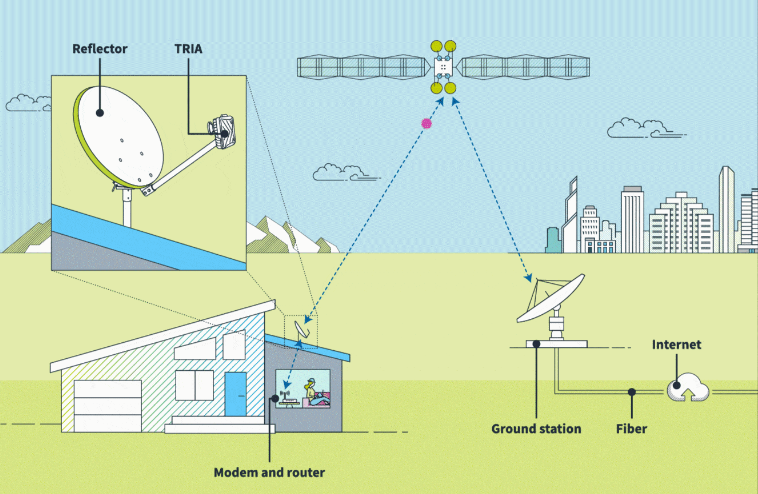
Use a Signal Booster
Applying a signal booster, also commonly referred to as an amplifier, is one way to improve your satellite internet. Signal booster works by amplifying the signals that your satellite dish receives, making them stronger before they reach your modem. Currently, there signal boosters can be very useful, primarily due to the fact that the satellite-based connection is inherently weak and unstable. Consequently, the booster is set up between your satellite dish and your modem and, ideally, augment the power of the satellite signal, possibly reducing the noise ratio, and improving the quality of your satellite internet connection. In practice, the booster will help your internet speed to stay consistent during peak hours and adverse weather, as your connection will be stabilized by the fact that the power of the signal is increased.
The effects of installing the booster can be assessed by comparing your device’s signal readings before the installation and after. Around 50% of improvement is usually reported, meaning more stable and a little faster internet. This effect is especially perceptible in remote areas with little infrastructure or lots of geographical obstacles hindering a stable satellite signal, as well as urban settings where the structural features of the building may be interfering with signal flow. When considering a signal booster as an option, one should first compare the booster to their existing satellite system and make sure that it is compatible and meets the signal frequency.
Some of the boosters are specifically made for satellite internet and work better than more generic models. The financial expenditure part of the decision should also not be neglected, as the price can vary from around $50 to over $200, depending on the brand. In general, a higher price means a higher-quality product that will last longer. On the other hand, one should beware of purchasing the cheapest possible option as high-quality boosters are an exception in the lower price-tag devices, and there may even arise some health concerns using them. Moreover, it is advisable to have your booster installed by a professional person, simply to ensure that the device is working at the optimal capacity and not set up in such a way that it creates a feedback loop with your satellite dish or other devices, exacerbating the interference.
Check and Replace Cables
Checking and replacing the cables in your satellite internet system regularly is important to keep your connection strong and stable, as cables degrade over time due to incurring wear and tear, weather damage, or animal interference. Signs of damage include frayed, cut, or otherwise exposed cables. Even minor amounts of wear and tear can negatively impact the quality of the signal transmitted to your modem.Coaxialcable.org. provides data suggesting that a slightly damaged coaxial cable could diminish signal strength by up to 30%.
Older cables are also likely to lack adequate insulation against radio frequency interference : the use of RG6 cables is recommended over RG59 cables, as RG6 cables provide better protection due to thicker insulation and double shielding. Upgrading to RG6 from RG59 could improve your signal by 5%, which can translate into a speed increase from 10mbps to 10.5mbps.. When replacing your cables, it is important to size them accurately, as an excess amount of cable leads to signal loss.
A standard 10-foot length of coaxialcable. provides 2dB of signal loss per cable foot, which means that every additional 5 feet of cable results in a 1dB signal loss. The cost difference between standard and high-quality cables is relatively small: the price of cables with better shielding and weather resistance capabilities is only around 20% higher, and they extend the lifespan of your satellite system significantly due to the minimization of signal loss.
Reduce Connection Stresses
one critical strategy for improving your satellite internet signal is to reduce connection stresses. By controlling the number and type of devices and applications using your internet, you can better manage who gets what resources and improve overall internet performance. For example, the following will help minimize buffering, slowdowns, and other connectivity issues:
1. First, find out which devices are connected to your home network and which ones are sustained streaming and background activities you might not be aware of. Streaming services, online games, and large downloads such as game and video updates can immediately stress your band. If identified, saves these high-bandwidth applications to use at off-peak hours or staggered intervals for simply one or two hours a day.
2. Next, you can use network management tools to prioritize traffic and ensure that critical applications always get all their assigned circuits. For instance, if you work from home, set up a Wi-Fi router so that video conferencing has a unique #10 on the list. Some of the most modern routers even have Quality of Service rules to speed up this process. For example, you might be able to prioritize data packets from Zoom utmost to minimize latency to a maximum of 30% while you’re videoconferencing.
Often, even if your tools or the equipment of your other housemates analyze the best stream quality or activities, you will not experience the drop in video quality that indicates that you’re bandwidth capped. Some older versions such as Wi-Fi 5 or below do not support new Wi-Fi networks and work better than replacement.
3. For many individuals, a good idea is to replace or retire their old Wi-Fi routers. The newest Wi-Fi routers allow you to perform advanced functions such as dual-band or limit circle distribution and better manage and decrease the expectations of both circuits or knowingly pack more central circuits. For example, disable your intensive web browsing over 4 GHz and move on to activities like HD video streaming and real-time or dynamic online streaming activity. Un suggest weighing in the form of 5 GHz. To share the bandwidth between the surrounding two hundred area bands. This will significantly enhance the performance of your satellite internet.
The number of devices being used at the same time might also be a consideration. Bandwidth is shared when you are using multiple tools to connect to the Internet with. Internet speed is simple while trying to minimize the number of linking devices in a network to achieve better results. As an example, having about ten divisions in section bandwidth accessing a single negative device that gives the same usage of about 10000 kilobits per second may make additions similar to 20%. to achieve optimal speed, much when appliance withdrawal may be beneficial.

